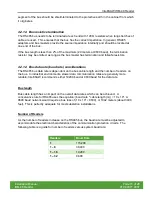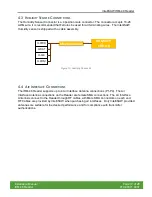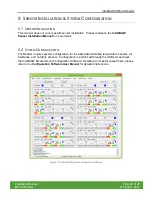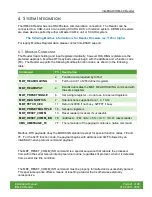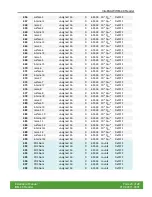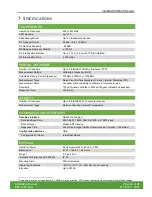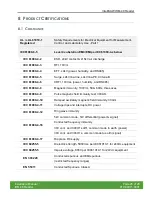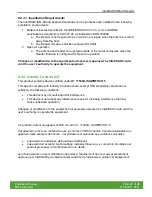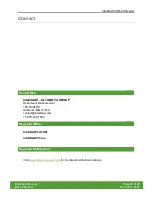
IntelliSAW IRM-48 Reader
Installation Manual
Page 26 of 28
IRM-48 Reader
910.00371.0001
8.2
W
IRELESS
C
ERTIFICATIONS
8.2.1
Telecommunication Compliance
All wireless devices require certification to ensure that they adhere to regulations regarding the
use of the RF spectrum. Nearly every country requires this type of product certification.
IntelliSAW is working with governmental agencies around the world to supply fully compliant
products and remove the risk of violating country directives or laws governing wireless device
usage. However, certification is dependent on the class of asset into which the equipment is
installed.
8.2.2
Approved Antennas
The Reader RF module has been approved to operate with the antenna types listed below with
the maximum permissible gain indicated. Antenna types not included in this list, having a gain
greater than the maximum gain indicated for that type, are strictly prohibited for use with this
device.
IntelliSAW Part #
Type
Gain
IA-MM-5-y
Monopole (5 cm mast)
-1 dBi
IA-MM-9-y
Monopole (9 cm mast)
+1 dBi
IA-MM-17-y
Monopole (17 cm mast)
+3.2 dBi
IA-MM-TPD-y
Patch inverted F (PIFA)
+3.5 dBi
IA-MM-TMP-y
Patch inverted F (PIFA)
+3.5 dBi
Part Number (“y”) indicates cable length and is offered in 3, 5, or 7 meters.
8.2.3
Federal Communications Commission (FCC)
This product contains
FCCID: 2AEAE-ISAW-RF-H0215
The design of the IRM-48 complies with U.S. Federal Communications Commission (FCC)
guidelines respecting safety levels of radio frequency (RF) exposure for fixed location devices.
This equipment has been tested and found to comply with the limits for a Class A digital device,
pursuant to part 15 of the FCC Rules when the unit is professional installed in metal enclosures
described in the IEEE standard C37.20. These limits are designed to provide reasonable
protection against harmful interference when the equipment is operated in a commercial
environment. This equipment generates, uses, and can radiate radio frequency energy and, if
not installed and used in accordance with the instruction manual, may cause harmful
interference to radio communications. Operation of this equipment in a residential area is likely
to cause harmful interference in which case the user will be required to correct the interference
at his own expense.







